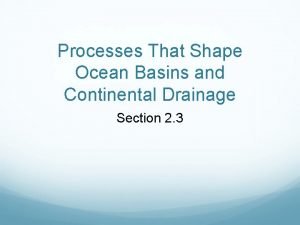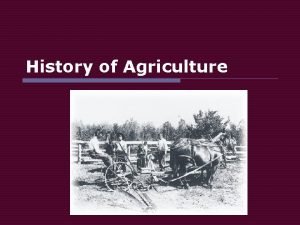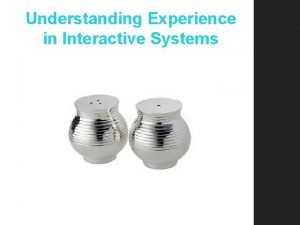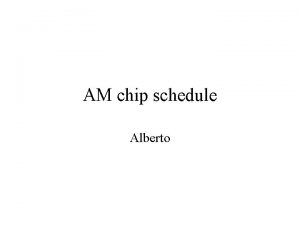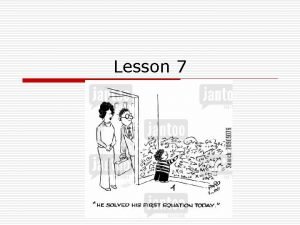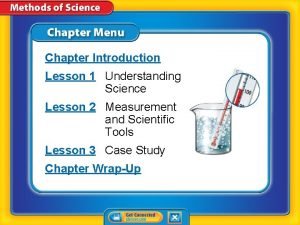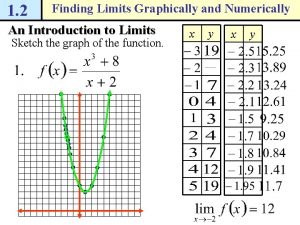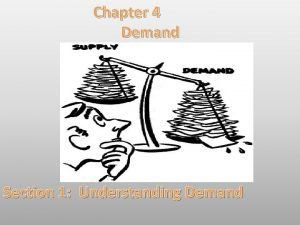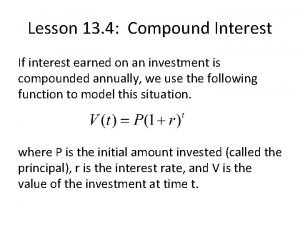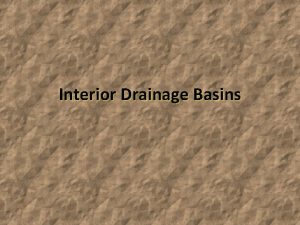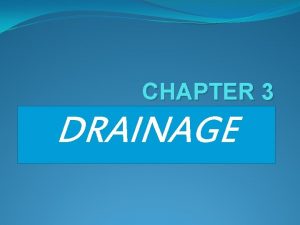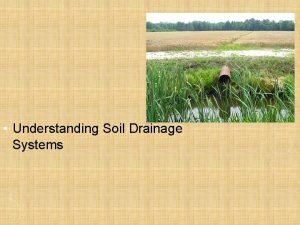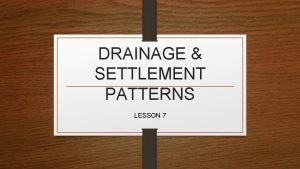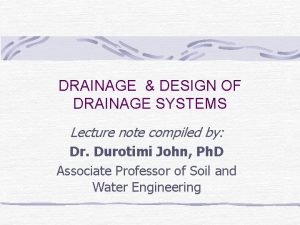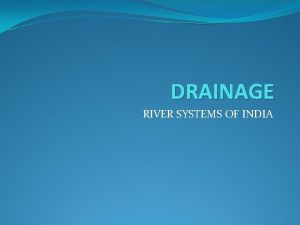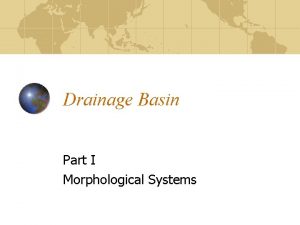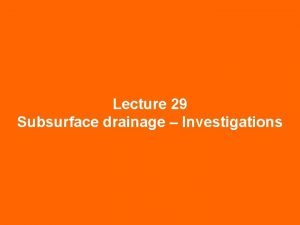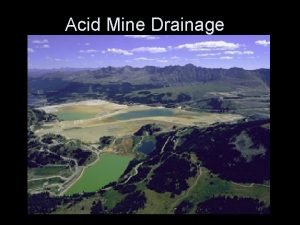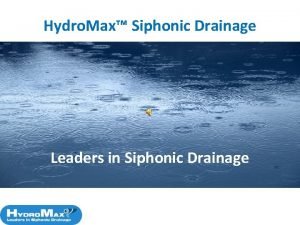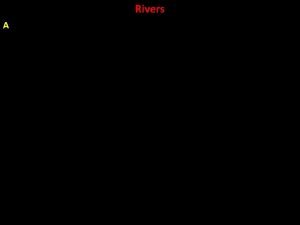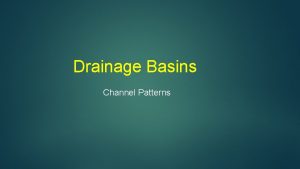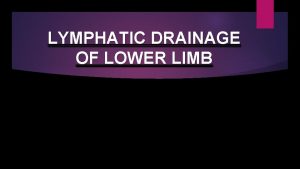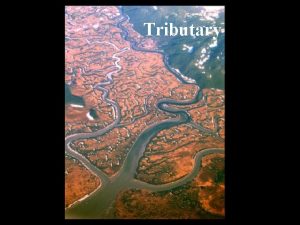Lesson Understanding Soil Drainage Systems Interest Approach Ask












































- Slides: 44

Lesson Understanding Soil Drainage Systems

Interest Approach • Ask students the question, “What determines how fast water will flow through a funnel? ” • Relate their answers about the funnel to soil and different soil textures. • Explain how these different textures cause a variety of pore sizes in the soil.

Student Learning Objectives 1. Identify the soil characteristics that effect soil drainage. 2. Explain what needs to be considered when designing a drainage system. 3. Identify the different types of soil drainage systems.

Terms Hydraulic gradient Natural drainage Normal water surface Siltation Soil depth Soil permeability Topographic position Velocity

What soil characteristics effect soil drainage? • • The U. S. has a wide variety of soils, and each differs in some way from all others. Soil types can be grouped into categories of soils with like drainage.

What soil characteristics effect soil drainage? • These categories are determined by using guidelines that are based upon field tests and upon past experience with drainage practices on various soils.

What soil characteristics effect soil drainage? • • There are four main soil factors that affect the design of man-made drainage systems. These characteristics are: – – Soil permeability Natural drainage Soil depth Topographic position

What soil characteristics effect soil drainage? • Soil Permeability: or hydraulic conductivity is the rate at which water will move through the soil. – • It is measured in inches per hour. Natural Drainage: is the degree of wetness before any drainage practices have been applied.

What soil characteristics effect soil drainage? • Soil Depth: refers to the depth of the soil profile from topsoil to subsoil. • Topographic Position: refers to the slope of the land other physical features.






What Needs to be Considered when Designing a Drainage System? • • To meet design requirements, a drainage system must have an outlet of adequate capacity, depth, and stability. If the outlet is inadequate, the effectiveness of the entire drainage system can be greatly reduced or lost.

What Needs to be Considered when Designing a Drainage System? • There a number of items that must be considered when designing a drainage system to be certain that it will work properly. Such as… - Capacity - Velocity - Hydraulic gradient - Channel depth - Cross section

Capacity • Crops can tolerate a limited amount of flooding or ponding but this should not be for longer than 24 to 48 hours. – To determine what the capacity of the outlet channel must be to remove water quickly enough, a producer can either calculate flood routings of the drainage area or refer to a drainage curve similar to the one shown in TM: A 2– 6 F.

Capacity • On this chart, the curves show the rate of discharge that will provide a certain level of drainage in the watershed area.


Velocity • The velocity or speed of the water flow must be high enough to prevent siltation in the channel but low enough to avoid erosion. • Siltation is the deposition of particles suspended in water.

Velocity • On average the velocity should be no lower than 1. 5 feet per second. • A lower velocity will cause siltation, which encourages moss and weed growth and reduces the cross section of the channel.

Hydraulic Gradient • • Hydraulic gradient represents the surface of the water when the outlet channel is operating at its design flow. The hydraulic gradient for the channel should be determined from control points such as the elevation of low areas served by the channel and the hydraulic gradients of tributary ditches.

Channel Depth • Channel depth - an outlet channel that receives water from subsurface drains. – – Should be designed to keep the normal water surface one foot below the bottom of the subsurface drain. Normal surface water is defined as the elevation of the usual flow during the growing season.

Cross Section • The design cross section of the outlet channel should meet the combined requirements of capacity, velocity, depth, side slopes, and bottom width. • The side slopes should be stable, meet maintenance requirements, and be designed according to site conditions.

Cross Section • In silt, the side slopes should be no steeper than 2: 1; in clay and other heavy soils, 1. 5: 1; and in sands, peat, and muck, 1: 1.




What are the different types of soil drainage systems? • There are two basic soil drainage systems. • Surface drainage • Subsurface drainage.

Surface Drainage • Surface drainage is the removal of water that collects on the land surface. • A surface drainage system consists of shallow ditches and should include land smoothing or land grading.

Surface Drainage • This type of system is suitable for all slowly permeable soils. • The rate at which water is removed by surface drainage depends on several interrelated factors, including rainfall, soil properties, and cropping patterns.

Subsurface Drainage • • Subsurface drainage is where the soil is permeable enough to allow economical spacing of the drains and productive enough to justify the investment. A complete subsurface drainage system consists of a surface or subsurface outlet and subsurface main drains and laterals.

Subsurface Drainage • • • Water is carried into the outlet by main drains, which receive water from the laterals. The system will function only as well as its outlet. Four basic patterns are used in the design of subsurface drainage systems.

Subsurface Drainage • It is important for the producer to select the pattern that best fits the topography of the land, that can be located near enough to the sources of excess water, and that is suited to other field conditions.

Subsurface Drainage The four patterns are: - Random - Parallel - Herringbone - Double Main

Random • • • The random pattern is suitable for undulating or rolling land that contains isolated wet areas. The main drain is usually placed in the swales rather than in deep cuts through ridges. The laterals in this pattern are arranged according to size of the isolated wet areas.

Parallel • • • The parallel pattern consists of parallel lateral drains located perpendicular to the main drain. The laterals in the pattern may be spaced at any interval consistent with site conditions. This pattern is used on flat, regularly shaped fields and on uniform soil.

Herringbone • • • The herringbone pattern consists of parallel laterals that enter the main at an angle, usually from both sides. The main is located on the major slope of the land, and the laterals are angled upstream on a grade. This pattern is often combined with others to drain small or irregular areas.

Herringbone • • Its disadvantages are that it may cause double drainage and that it may cost more than other patterns because it contains more junctions. However, it can provide the extra drainage needed for the less permeable soils that are found in narrow depressions.

Double Main • • • The double main pattern is a modification of the parallel and herringbone patterns. It is applicable where a depression divides the field in which drains are to be installed. A pattern is also chosen where the digressional area is wet because of seepage coming from higher ground.

Double Main • Placing a main on each side of the depression serves two purposes. • • The main intercepts the seepage water. It provides an outlet for the laterals.


Review / Summary • The U. S. has a wide variety of soils, and each differs in some way from all others. • Soil types can be grouped into categories of soils with like drainage. • To meet design requirements, a drainage system must have an outlet of adequate capacity, depth, and stability.

Review / Summary • If the outlet is inadequate, the effectiveness of the entire drainage system can be greatly reduced or lost. • There are two basic soil drainage systems. • They are surface drainage and subsurface drainage.
 Vegetables
Vegetables Pendleton rules of feedback
Pendleton rules of feedback Understanding science worksheet answers lesson 1
Understanding science worksheet answers lesson 1 Living soil vs dead soil
Living soil vs dead soil What are the four spheres of the earth
What are the four spheres of the earth Golf green drainage system
Golf green drainage system Continental drainage systems
Continental drainage systems Nominal v. real interest rates
Nominal v. real interest rates Effective interest rate
Effective interest rate 0 965
0 965 Question about today's lesson
Question about today's lesson Understanding ekgs a practical approach
Understanding ekgs a practical approach Map model of culture
Map model of culture Interest approach
Interest approach Explain the interest-based relational (ibr) approach.
Explain the interest-based relational (ibr) approach. Types of sae programs
Types of sae programs Understanding experience in interactive systems
Understanding experience in interactive systems Understanding operating system
Understanding operating system Transalate
Transalate Chapter 9 lesson 3 understanding violence
Chapter 9 lesson 3 understanding violence Chapter 23 communicable diseases
Chapter 23 communicable diseases Writing literal equations
Writing literal equations Chapter 4 lesson 1 understanding stress
Chapter 4 lesson 1 understanding stress Lesson 4 promoting health and wellness
Lesson 4 promoting health and wellness Chapter 1 lesson 2 what affects your health
Chapter 1 lesson 2 what affects your health Chapter 1 lesson 2 what affects your health
Chapter 1 lesson 2 what affects your health Understanding points lines and planes
Understanding points lines and planes Understanding points lines and planes
Understanding points lines and planes Geometric term modeled by each object
Geometric term modeled by each object Understanding science lesson 1 answer key
Understanding science lesson 1 answer key Lesson 2 understanding limits graphically and numerically
Lesson 2 understanding limits graphically and numerically Understanding points lines and planes
Understanding points lines and planes Understanding points lines and planes
Understanding points lines and planes Analyzing limits graphically
Analyzing limits graphically Measurement and scientific tools lesson 2
Measurement and scientific tools lesson 2 Lesson 2 understanding limits graphically and numerically
Lesson 2 understanding limits graphically and numerically Lesson 1 understanding demand
Lesson 1 understanding demand Chapter 23 lesson 1 understanding communicable diseases
Chapter 23 lesson 1 understanding communicable diseases Chapter 1 understanding health and wellness lesson 3
Chapter 1 understanding health and wellness lesson 3 13-4 compound interest
13-4 compound interest Personal finance unit 2 lesson 2
Personal finance unit 2 lesson 2 Difference between virtual circuit and datagram subnet
Difference between virtual circuit and datagram subnet Theoretical models of counseling
Theoretical models of counseling Waterfall and sprinkler strategy
Waterfall and sprinkler strategy Multiple approach-avoidance conflict
Multiple approach-avoidance conflict






